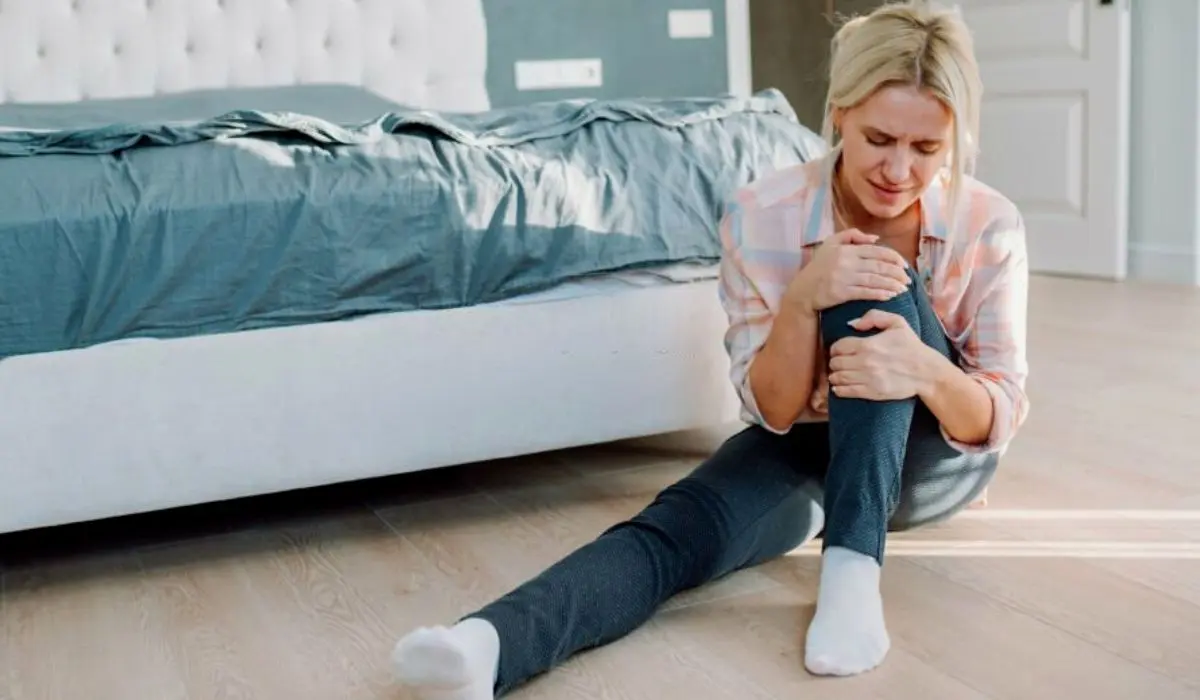A woman has to go through different phases of life, and menopause is one of them. It is a natural phase in her life that brings about a myriad of physical and hormonal changes. The one going through this time often experiences hot flashes and mood swings, but it does not end here. Joint pain adds to the suffering and affects many women during this transitional period.
To find out how to cure or relieve methods that can be helpful during this phase, you must first understand the causes of menopausal joint pain. In this way, you can discover an effective way to make this period more manageable and comfortable.
Causes Of Menopausal Joint Pain
1] Hormonal Fluctuations
One of the primary causes of menopausal joint pain is hormonal fluctuations. This is also termed the decline of estrogen levels. You know how important estrogen is in a woman’s body, right? If not then Estrogen plays a role in maintaining joint health and lubrication, and when its level drops during menopause, it can lead to joint inflammation and discomfort.
2] Inflammatory Changes
When a hormone shift takes place in a woman’s body, it also triggers inflammatory responses in the body. This triggering contributes to joint pain during menopause. If you are wondering how it happens, then inflammation is a natural response of the body to tissue damage. During menopause, the body’s regulatory mechanism may become disrupted and cause discomfort to the individual.

3] Osteoarthritis
You must have read in the human anatomy that between the knee joints, there is a rubber-like structure known as cartilage. During menopause, there is a high risk of developing a degenerative joint disease called Osteoarthritis. It is a disease in which the estrogen level starts to diminish, and that leads to cartilage loss. When the diminishes cartilage in the individual, they suffer from painful, stiff, and swollen joints.
4] Weight Gain
Weight is common during menopause, and the extra pound can put added stress on the joints. When too much weight is put on the joints, it can lead to pain and discomfort. The most common areas that are weight-bearing joints are knees and hips because your weight is on the knees while standing and on the hips when you are sitting.
Relief Methods For Menopausal Joint Pain
1] Hormone Replacement Therapy (HRT)
For some women, hormone replacement therapy can help alleviate joint pain by restoring estrogen levels. However, this is the decision that must be taken carefully after consulting the ortho. There can be certain risks and benefits, so one must know every aspect before deciding to use HRT for relief.
2] Regular Exercise
Engaging in regular low-impact exercises such as swimming, yoga, or tai chi can help improve joint flexibility. These activities can reduce inflammation and strengthen the muscles around the joints. One must avoid doing heavy or high-impact exercise as it may affect negatively. Exercise is one of the best aids in weight management.
3] Dietary Changes
A balanced diet rich in anti-inflammatory foods, such as fruits, vegetables, whole grains, and omega-3 fatty acids, can help reduce joint pain. Increase the consumption of a healthy diet and gradually reduce the intake of processed foods and sugars. This can contribute to overall joint health.
4] Over-The-Counter Pain Reliever
Non-prescription pain relievers like ibuprofen or acetaminophen can be effective for managing mild to moderate joint pains. However, if the pain does not subside and continues to worsen, consulting a doctor or specialist is recommended.
Read More:- How To Heal Inflamed Urethra In Females? Tips & Treatment
5] Physical Therapy
Working with a physical therapist can provide tailored exercises and techniques to improve joint mobility and reduce pain. These exercises must only be practiced in the presence of specialists, as doing them on your own can worsen the pain.
6] Topical Pain Relief
Over-the-counter topical analgesics and anti-inflammatory creams can offer localized relief for sore joints. There are several sprays and creams that you can apply on the painting area directly to get relief.
What Is The Right Approach To Cure Menopausal Joint Pain?
Menopausal joint pain can be challenging, but with the right approach, it is manageable. Once you have found out the root cause of the pain, you can implement a combination of relief methods. Consulting an ortho is essential if the pain doesn’t subside with medicines and other treatments.